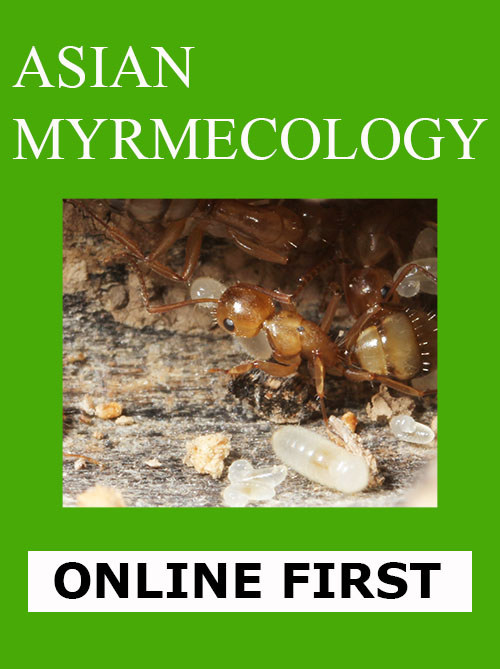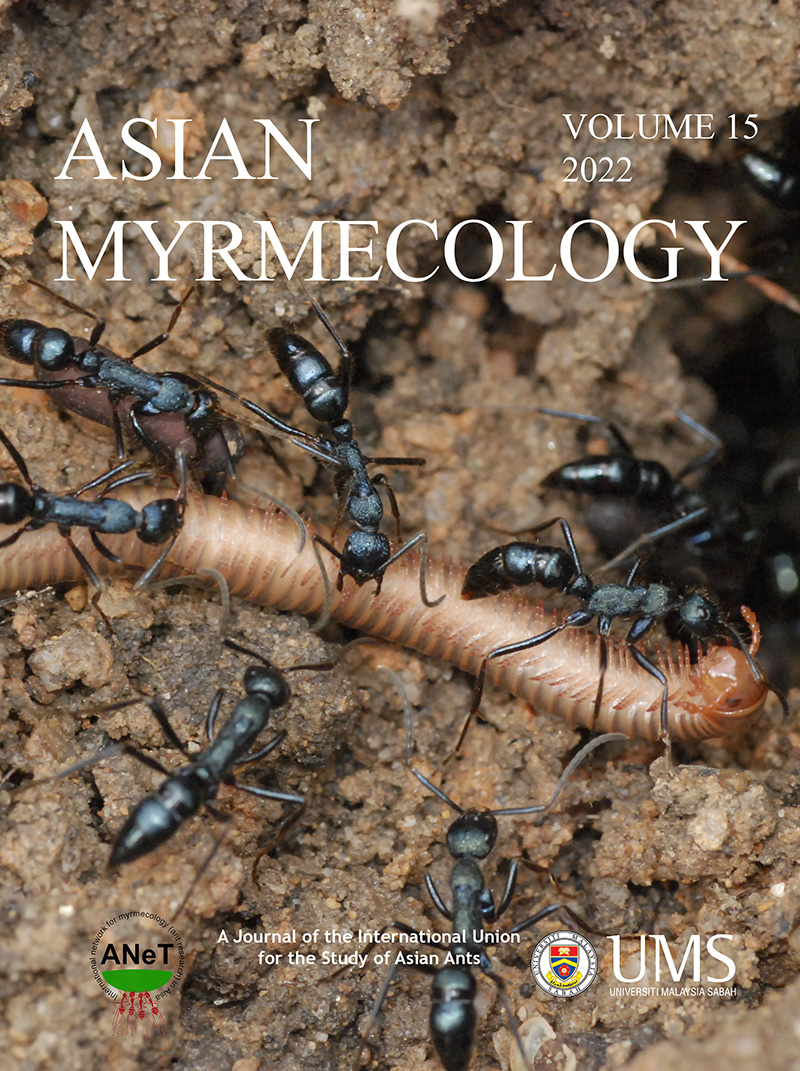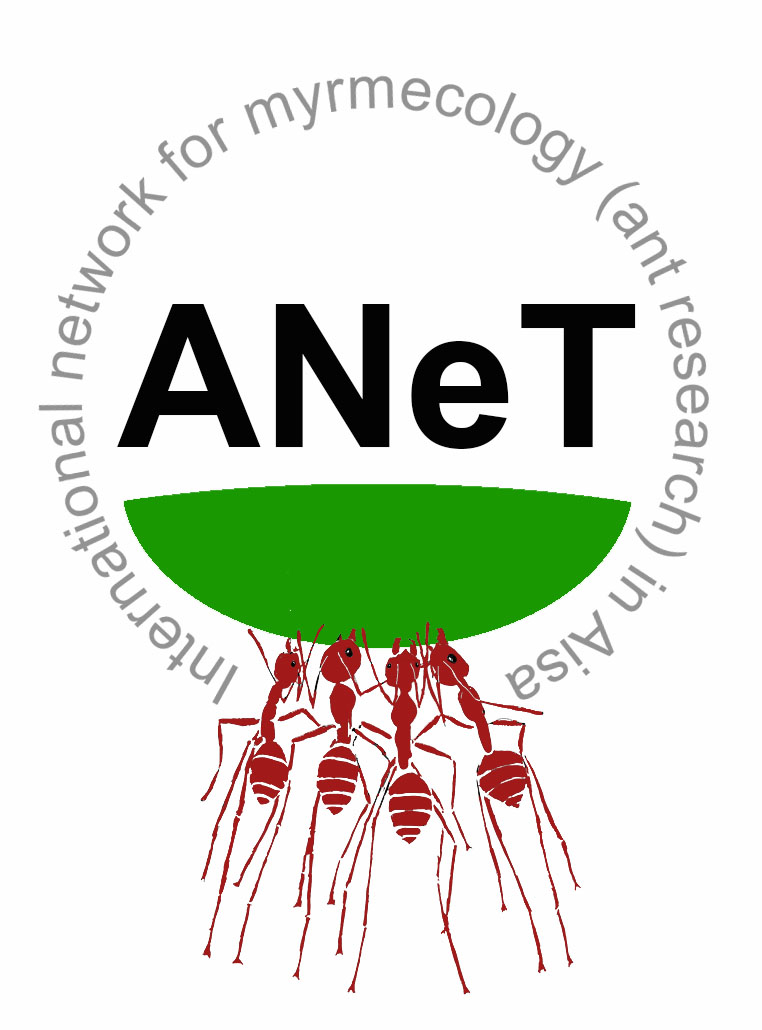ASIAN
MYRMECOLOGY
Image: François Brassard
DOI: 10.20362/am.016003
Asian Myrmecology 16: 016003 (1-20)
article first published online: 19/January/2023
Ponerine ants of Nepal (Hymenoptera: Formicidae, Ponerinae): a generic synopsis, new faunal records, and rediscovery of a rare ant, Emeryopone franzi (Baroni Urbani 1975)
INDRA PRASAD SUBEDI1, PREM BAHADUR BUDHA1, HIMENDER BHARTI2, LEEANNE ALONSO3 & SEIKI YAMANE4
Abstract:
Ponerinae is the third-largest subfamily within the ant family Formicidae and makes up its own clade. The Ponerine ants are diverse and widespread across the world, including in Nepal where thirteen genera have been documented. The taxonomy, biology, and ecology of these thirteen ponerine ant genera (Bothroponera, Brachyponera, Buniapone, Centromyrmex, Diacamma, Ectomomyrmex, Emeryopone, Harpegnathos, Hypoponera, Leptogenys, Odontomachus, Odontoponera, and Pseudoneoponera) are provided in the form of brief generic synopsis. A list of species in each genus is also presented along with new faunal and distribution records for the country. Of all the recorded fauna, three genera, Bothroponera, Ectomomyrmex and Hypoponera, and 10 species, Bothroponerates seronoda, Brachyponera luteipes, Centromyrmex feae, Diacamma indicum, D. sikkimense, Ectomomyrmex annamitus, Ectomomyrmex sp. NP-IPS-01 (nr. astutus), E. striolatus, Hypoponera confinis, and Leptogenys sp. NP-IPS-02 (diminuta species group) represent new records for Nepal. Identification keys for Nepalese ponerine ant genera based on the worker caste are provided. Representative species of each genus are illustrated by images of head in full-face and habitus in profile view. A rare endemic ant of Nepal, Emeryopone franzi (Baroni Urbani 1975) is rediscovered 45 years after its original description,and descriptive notes based upon recently collected materials are provided.
Keywords:
Diversity, Himalaya, identification keys, Nepalese ants, new records, poneroid
Get PDF (5.6 MB) :
INDRA PRASAD SUBEDI1, PREM BAHADUR BUDHA1, HIMENDER BHARTI2, LEEANNE ALONSO3 & SEIKI YAMANE4
Abstract:
Ponerinae is the third-largest subfamily within the ant family Formicidae and makes up its own clade. The Ponerine ants are diverse and widespread across the world, including in Nepal where thirteen genera have been documented. The taxonomy, biology, and ecology of these thirteen ponerine ant genera (Bothroponera, Brachyponera, Buniapone, Centromyrmex, Diacamma, Ectomomyrmex, Emeryopone, Harpegnathos, Hypoponera, Leptogenys, Odontomachus, Odontoponera, and Pseudoneoponera) are provided in the form of brief generic synopsis. A list of species in each genus is also presented along with new faunal and distribution records for the country. Of all the recorded fauna, three genera, Bothroponera, Ectomomyrmex and Hypoponera, and 10 species, Bothroponerates seronoda, Brachyponera luteipes, Centromyrmex feae, Diacamma indicum, D. sikkimense, Ectomomyrmex annamitus, Ectomomyrmex sp. NP-IPS-01 (nr. astutus), E. striolatus, Hypoponera confinis, and Leptogenys sp. NP-IPS-02 (diminuta species group) represent new records for Nepal. Identification keys for Nepalese ponerine ant genera based on the worker caste are provided. Representative species of each genus are illustrated by images of head in full-face and habitus in profile view. A rare endemic ant of Nepal, Emeryopone franzi (Baroni Urbani 1975) is rediscovered 45 years after its original description,and descriptive notes based upon recently collected materials are provided.
Keywords:
Diversity, Himalaya, identification keys, Nepalese ants, new records, poneroid
Get PDF (5.6 MB) :
1Central Department of Zoology, Tribhuvan University, Kirtipur 44618, Kathmandu, Nepal
2Department of Zoology and Environmental Sciences, Punjabi University, Patiala, India
3Re-wild, Austin, USA
4Kagoshima University Museum, Kagoshima, Japan
*Corresponding author: indra.subedi@cdz.tu.edu.np



